Fun With HDR Piccies
Following on from my last update on panoramics, again rather than witter on about something most of you probably aren't interested in, I thought perhaps I'd try and get you interested in something you probably didn't even know about. Ladies and gentlephones, welcome to the wonderful world HDR photography.
What the hell is that I hear you ask? Well perhaps the easiest way of describing it is... capturing the world as we see it, rather than as the camera sees it. In actual fact it can be used to create everything from an accurate representation of what we see with the human eye, to something somewhat eerie and out of this world.
If you consider the range of colours and brightness our human eye can see as the be all and end all of "seeing", then that is one heck of a range. In the very darkest nights, with just the starlight to guide us, after taking some time to adjust our eyes can make out objects even if they aren't always obvious what they are. Likewise, on the sunniest days, we can see the folds and creases of the brightest of white clothing.
Our eyes manage that because they are a dynamic system for recording light, with an iris that contracts to reduce the amount that hits our retinas, and no less than two sets of receptacles for processing the light that gets in there. On a bright day, as we scan from well lit buildings and people, to objects hidden in the shade, our eyes constantly adjust to give us the best possible view regardless of the light available.
Cameras work pretty much the same way as our eyes do, with one exception, the moment you actually record what they see as a photograph, you are freezing how they see the world for that shot. Whilst many cameras are capable of seeing objects brighter than we can cope with, and darker than we can ever hope to see, they lack that luxury we have of being able to look from one to the other.
Enter stage left, High Dynamic Range photography, which mainly consists of taking multiple shots at different exposures, or bracketing as it is known in the trade (most digital cameras support this feature, so you don't need an SLR to use it), and then combining then into one image. Special software is used to automatically pick the highest contrast areas from each image, a freeware option being the incredibly badly documented but good when you've got the hang of it, Qtpfsgui. Although commercial fans may want to try the trial of Photomatix.
The first thing you really need when doing this sort of work, at least for the best results, is a tripod. The second thing you need, is subject matter that covers a wide range of brightness levels, and most importantly isn't moving. Architecture is a natural target, as are landscapes, especially when combined with energetic skies. Without HDR techniques, usually you can get a beautifully exposed building or scene, but an over-exposed sky or vice versa, with it you can get the best of both worlds.
As ever, here is an example of my first proper attempt, a shot taken near sunset of an oak tree in my local park. This is a very problematic thing to shoot, if you want detail from the sky that requires you to use an exposure which loses all the detail of the trees and grass. Combining them using HDR software has produced a very almost painting like portrayal of the scene, much closer to how it looked at the time.
Much like with my panoramic picture last week, I've included the source images above so you can compare what the source and final images look like.
No long descriptions needed this time, first up is what has been labelled as a wacky tribal dance, pretty accurate if you ask me.
And secondly, a cute video, because everyone likes to see a cute video! Except when it contains cats, I tire of any videos with cats.
What the hell is that I hear you ask? Well perhaps the easiest way of describing it is... capturing the world as we see it, rather than as the camera sees it. In actual fact it can be used to create everything from an accurate representation of what we see with the human eye, to something somewhat eerie and out of this world.
If you consider the range of colours and brightness our human eye can see as the be all and end all of "seeing", then that is one heck of a range. In the very darkest nights, with just the starlight to guide us, after taking some time to adjust our eyes can make out objects even if they aren't always obvious what they are. Likewise, on the sunniest days, we can see the folds and creases of the brightest of white clothing.
Our eyes manage that because they are a dynamic system for recording light, with an iris that contracts to reduce the amount that hits our retinas, and no less than two sets of receptacles for processing the light that gets in there. On a bright day, as we scan from well lit buildings and people, to objects hidden in the shade, our eyes constantly adjust to give us the best possible view regardless of the light available.
Cameras work pretty much the same way as our eyes do, with one exception, the moment you actually record what they see as a photograph, you are freezing how they see the world for that shot. Whilst many cameras are capable of seeing objects brighter than we can cope with, and darker than we can ever hope to see, they lack that luxury we have of being able to look from one to the other.
Enter stage left, High Dynamic Range photography, which mainly consists of taking multiple shots at different exposures, or bracketing as it is known in the trade (most digital cameras support this feature, so you don't need an SLR to use it), and then combining then into one image. Special software is used to automatically pick the highest contrast areas from each image, a freeware option being the incredibly badly documented but good when you've got the hang of it, Qtpfsgui. Although commercial fans may want to try the trial of Photomatix.
The first thing you really need when doing this sort of work, at least for the best results, is a tripod. The second thing you need, is subject matter that covers a wide range of brightness levels, and most importantly isn't moving. Architecture is a natural target, as are landscapes, especially when combined with energetic skies. Without HDR techniques, usually you can get a beautifully exposed building or scene, but an over-exposed sky or vice versa, with it you can get the best of both worlds.
As ever, here is an example of my first proper attempt, a shot taken near sunset of an oak tree in my local park. This is a very problematic thing to shoot, if you want detail from the sky that requires you to use an exposure which loses all the detail of the trees and grass. Combining them using HDR software has produced a very almost painting like portrayal of the scene, much closer to how it looked at the time.
Much like with my panoramic picture last week, I've included the source images above so you can compare what the source and final images look like.
This Week's Videos
No long descriptions needed this time, first up is what has been labelled as a wacky tribal dance, pretty accurate if you ask me.
And secondly, a cute video, because everyone likes to see a cute video! Except when it contains cats, I tire of any videos with cats.
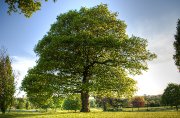
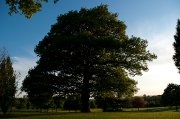

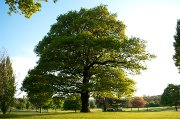
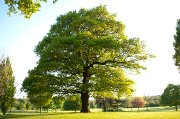













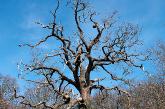


















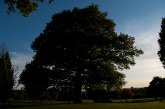

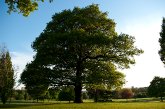



Your Opinions and Comments